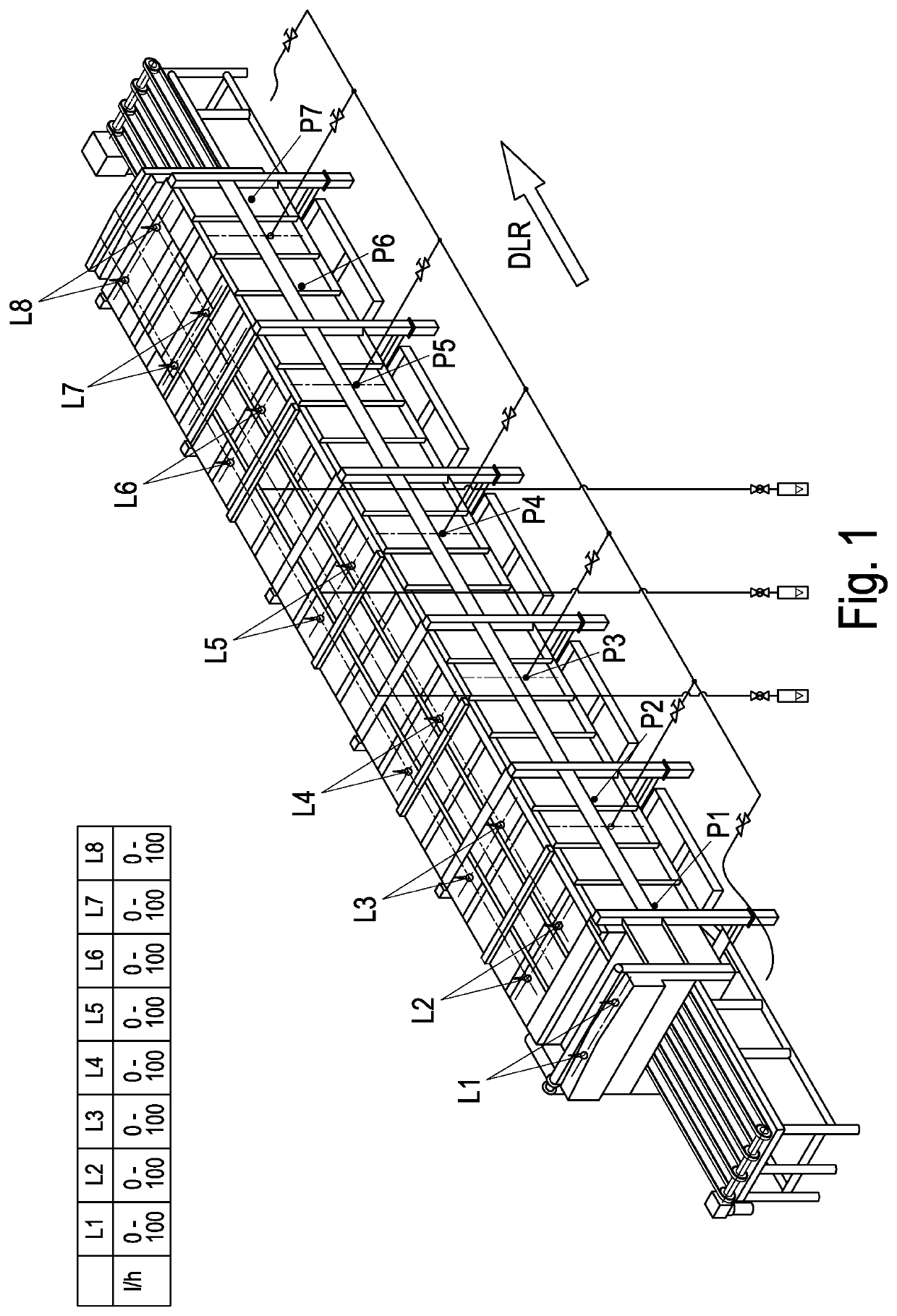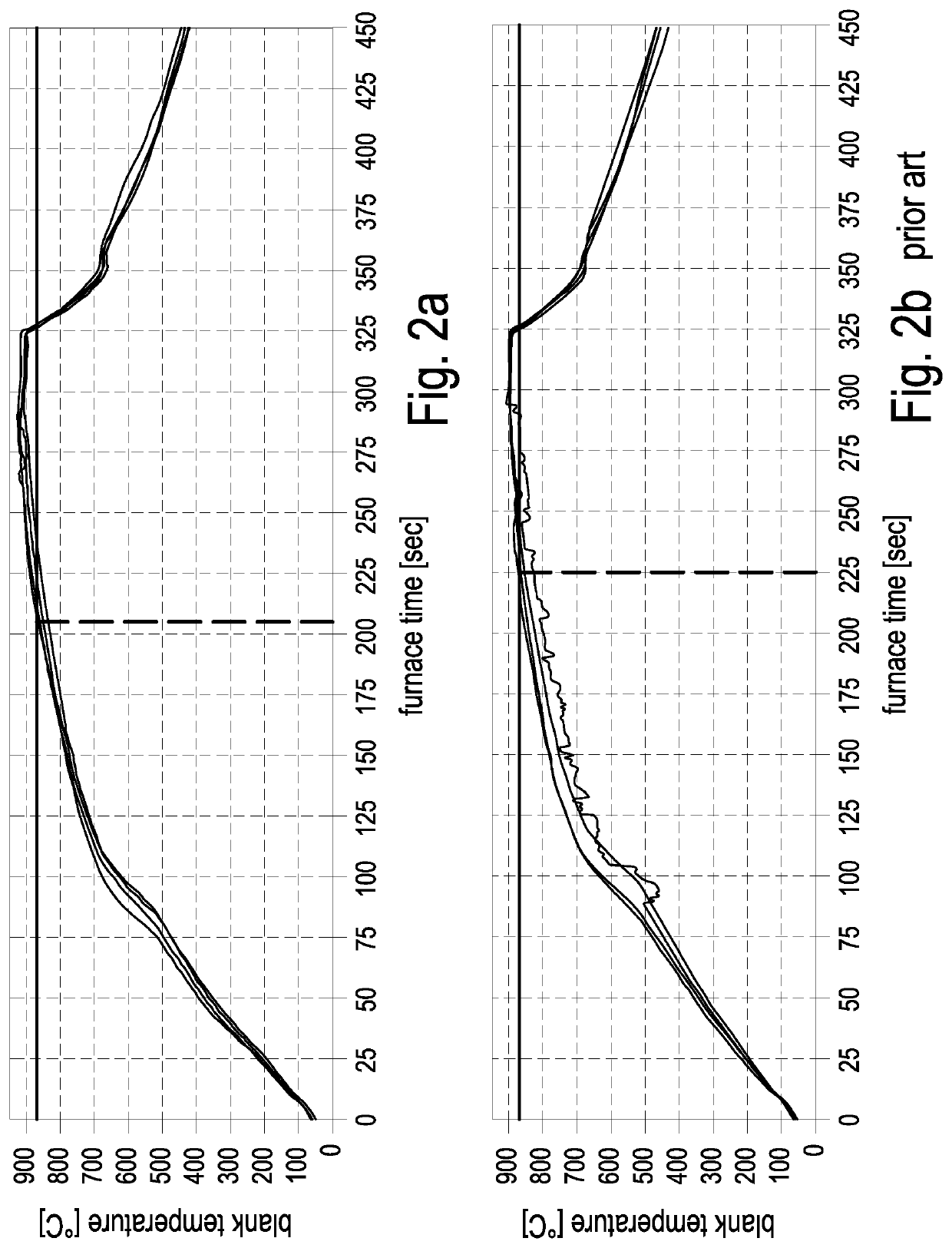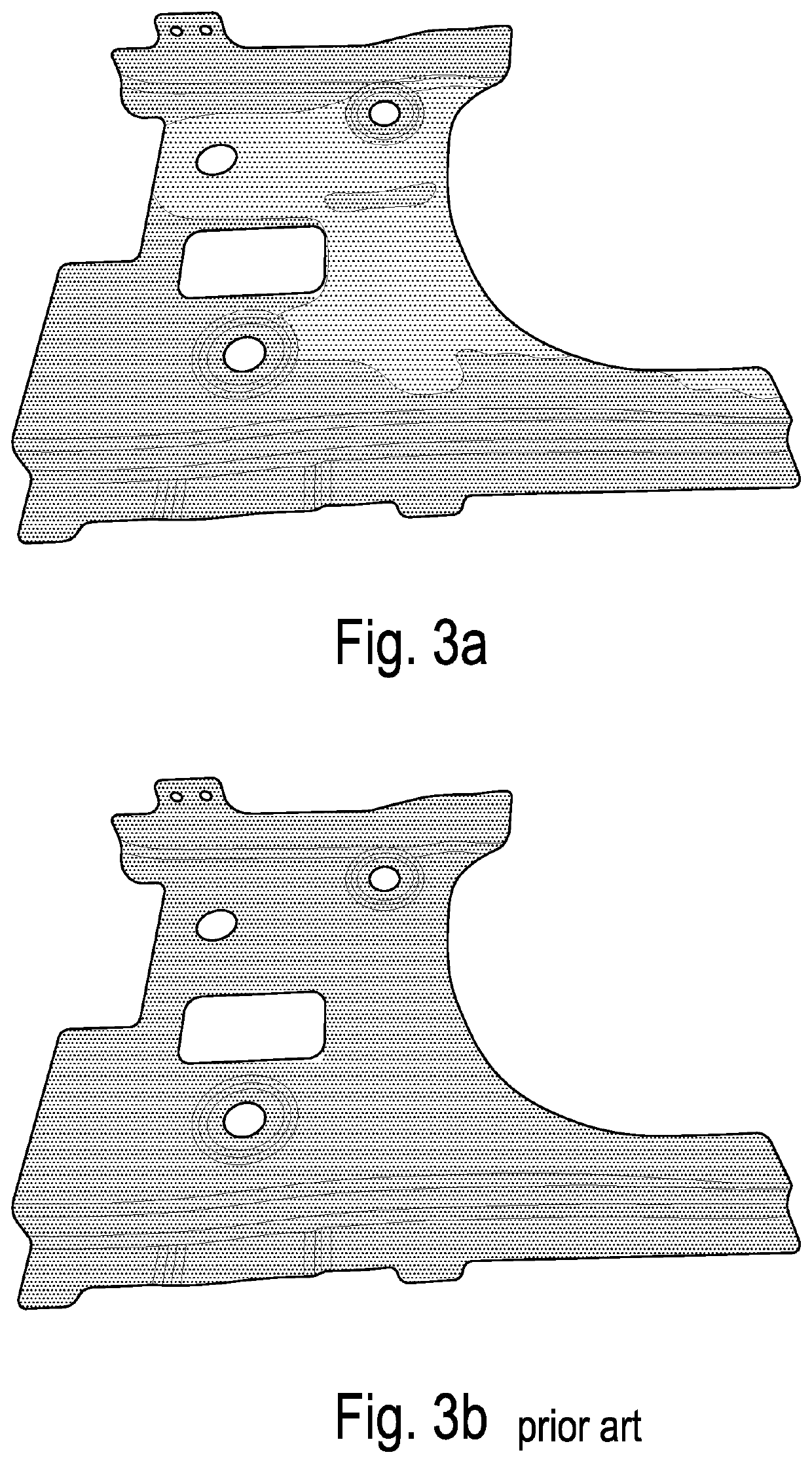Method and device for heating a steel blank for hardening purposes
a technology for hardening and steel blanks, applied in the direction of heat treatment process control, furnaces, furnace types, etc., can solve the problems of paint infiltration performance degradation, achieve simple and inexpensive operation, improve the optical appearance of steel, and reduce the dew point
- Summary
- Abstract
- Description
- Claims
- Application Information
AI Technical Summary
Benefits of technology
Problems solved by technology
Method used
Image
Examples
Embodiment Construction
[0046]FIG. 1 shows a pass-through according to the invention for carrying out the method according to claim 1.
[0047]8 pairs of supply air lances L1 to L8 are mounted in the furnace, which can introduce different quantities of dried air into the furnace chamber.
[0048]In addition, 7 measuring points 1 to 7 are provided, which are intended for measuring the dew point in the furnace.
[0049]Based on the measured values (dew point), the supply air can be controlled for the respective supply air lance pair.
[0050]DLR refers to the furnace passage direction, hence the direction in which the blanks or components pass through the furnace, i.e. they are introduced into the furnace on the left side, first reach the supply air lance pair L1, L2, etc. and at the end of the continuous furnace reach a temperature above the austenitization temperature of the respective steel sheet grade, i.e. approx. 850° C. to 900° C.
[0051]The corresponding heating curve when using the method according to the inventi...
PUM
| Property | Measurement | Unit |
|---|---|---|
| dew point | aaaaa | aaaaa |
| dew point | aaaaa | aaaaa |
| dew point | aaaaa | aaaaa |
Abstract
Description
Claims
Application Information
 Login to View More
Login to View More - R&D
- Intellectual Property
- Life Sciences
- Materials
- Tech Scout
- Unparalleled Data Quality
- Higher Quality Content
- 60% Fewer Hallucinations
Browse by: Latest US Patents, China's latest patents, Technical Efficacy Thesaurus, Application Domain, Technology Topic, Popular Technical Reports.
© 2025 PatSnap. All rights reserved.Legal|Privacy policy|Modern Slavery Act Transparency Statement|Sitemap|About US| Contact US: help@patsnap.com



